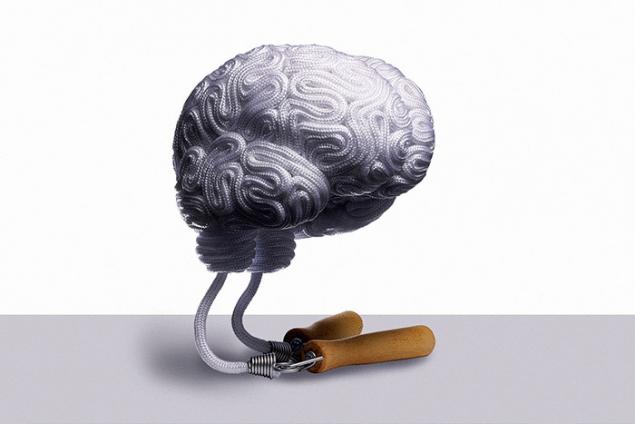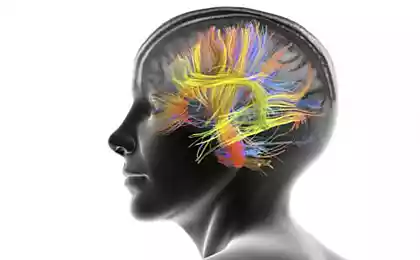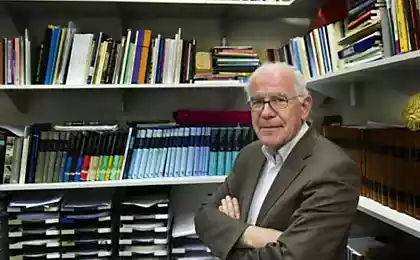192
Living with one hemisphere: what is plasticity of the brain

© Adam Voorhes
Until 30 years ago, the human brain was considered an organ that ends its development in adulthood. However, our nervous tissue evolves throughout life, responding to the movements of intelligence and changes in the external environment. Brain plasticity allows a person to learn, explore, or even live with one hemisphere if the other has been damaged.
The development of the brain does not stop when its formation is completed. Today, we know that neural connections arise, fade and regenerate all the time, so that the process of evolution and optimization in our heads never stops. This phenomenon is called “neuronal plasticity” or “neuroplasticity”. It enables our minds, minds and cognitive skills to adapt to environmental changes, and it is the key to the intelligent evolution of a species. Between the cells of our brain are constantly created and maintained trillions of connections, riddled with electrical impulses and flashing like small lightning bolts. Every cell is in its place. Each intercellular bridge has been carefully tested for its existence. Nothing accidental. And nothing predictable: the plasticity of the brain is its ability to adapt, improve itself and develop according to circumstances.
Plasticity allows the brain to experience amazing changes. For example, one hemisphere may additionally take over the functions of the other if it does not work. This happened in the case of Jodie Miller, a girl who, at the age of three, due to untreated epilepsy, almost completely removed the cortex of the right hemisphere, filling the vacant space with cerebrospinal fluid. The left hemisphere almost instantly began to adapt to the existing conditions and took control of the left half of Jodie's body. Just ten days after the operation, the girl left the hospital: she could walk and use her left hand. Although Jodie has only half of her cortex, her intellectual, emotional and physical development is unaffected. The only reminder of the operation is a slight paralysis of the left side of the body, which, however, did not prevent Miller from attending choreography classes. At the age of 19, she graduated from high school with excellent grades.
All this is made possible by the ability of neurons to create new connections between themselves and erase old ones if they are not needed. At the heart of this property of the brain are complex and poorly understood molecular events that rely on gene expression. An unexpected thought leads to the emergence of a new synapse – a zone of contact between the processes of nerve cells. Mastering a new fact - to the birth of a new brain cell in the hypothalamus. Sleep makes it possible to grow the necessary and remove unnecessary axons - long processes of neurons, through which nerve impulses go from the cell body to its neighbors.
If the tissue is damaged, the brain will know. Some of the cells that used to analyze light, for example, can begin to process sound. As far as information is concerned, our neurons have a brutal appetite, so they are willing to analyze whatever they are offered. Any cell is capable of handling any type of information. Mental events provoke an avalanche of molecular events that occur in the bodies of cells. Thousands of pulses regulate the production of the molecules needed for an instantaneous neuron response. The genetic landscape against which this action unfolds – the physical changes in the nerve cell – looks incredibly multifaceted and complex.
“The process of brain development allows millions of neurons to be created in the right places and then instructs each cell to form unique connections with other cells,” says Susan McConnell, a neuroscientist at Stanford University. You can compare it to a theatrical production: it is set in a script written in genetic code, but it has no director, no producer, and the actors have never spoken to each other before going on stage. And despite all this, the show is on. This is a miracle to me.”
Plasticity of the brain manifests itself not only in extreme cases - after injury or illness. The development of cognitive abilities and memory is also a consequence of it. Studies have shown that learning any new skills, whether learning a foreign language or getting used to a new diet, strengthens synapses. Declarative memory (e.g., remembering facts) and procedural memory (e.g., maintaining motor cycling skills) are associated with two types of neuroplasticity known to us.
Structural neuroplasticity: constant development
Structural neuroplasticity is associated with declarative memory. Every time we turn to familiar information, the synapses between our nerve cells change: stabilize, amplify, or erase.
It occurs in the cerebellum, tonsils, hippocampus and cortex of each person’s large hemispheres every second. “Receivers” of information on the surface of neurons — the so-called dendritic spines — grow to absorb more information. And if the growth process is started in one spine, the neighbors immediately willingly follow its example. The postsynaptic seals, a dense zone found in some synapses, produce more than 1,000 proteins that help regulate information exchange at the chemical level. Synapses run many different molecules, the action of which allows them not to decay. All these processes are constant, so from a chemical point of view, our head looks like a metropolis permeated with transport networks, which is always in motion.
Neuroplastic learning: outbreaks in the cerebellum
Neuroplastic learning, unlike structural, occurs in outbursts. It is associated with procedural memory, responsible for the sense of balance and motor skills. When we get on a bicycle after a long break or learn to swim as a rabbit, the so-called climbing and mossy fibers are restored or appear in our cerebellum for the first time: the first - between large en.wikipedia.org/wiki/purkinje cells in one layer of tissue, the second - between granular cells in another. Many cells change together, "chorome", at the same moment - so that we, without specially remembering anything, are able to move the scooter or stay afloat.

Norman Doidge, The Brain That Changes Itself: Stories of Personal Triumph from the Frontiers of Brain Science
Motor neuroplasticity is closely related to the phenomenon of long-term potentiation - an increase in synaptic transmission between neurons, which allows you to preserve the conductive path for a long time. Today, scientists believe that long-term potency underlies cellular learning and memory mechanisms. Throughout the entire process of evolution of various species, it ensured their ability to adapt to environmental changes: do not fall from a branch in a dream, dig frozen soil, notice the shadows of birds of prey on a sunny day.
It is clear, however, that the two types of neuroplasticity do not describe all the changes that occur in and between nerve cells throughout life. The picture of the brain seems to be as complex as the picture of the genetic code: the more we learn about it, the better we understand how little we actually know. Plasticity allows the brain to adapt and develop, change its structure, improve its functions at any age, and cope with the effects of disease and injury. This is the result of the simultaneous work of various mechanisms, the laws of which we have yet to study. published
Source: theoryandpractice.ru























